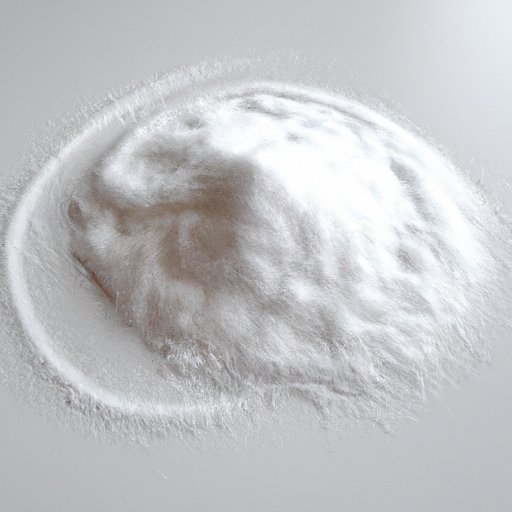I. Introduction
Sodium is found in many foods, and it can be easy to consume more than the recommended daily limit. However, limiting sodium intake is important for maintaining good health, especially for those with high blood pressure, kidney disease, or other health conditions. In this article, we will explore how much sodium is in a low sodium diet and provide tips on how to maintain a low sodium lifestyle.
II. The Science Behind a Low Sodium Diet
Scientific evidence supports limiting sodium intake to help reduce high blood pressure, which is a significant risk factor for heart disease and stroke. The body needs a small amount of sodium to function, but most people consume significantly more than necessary. It’s important to understand the target amount of sodium so that you can make informed decisions about your diet.
III. Recommended Daily Limits for a Low Sodium Diet
The American Heart Association recommends a daily sodium intake of no more than 2,300 milligrams (mg) per day for most adults. For those with high blood pressure, kidney disease, or other health conditions, the recommended daily limit may be lower. It’s important to be aware of sodium-rich foods and to read food labels carefully. Some examples of sodium-rich foods include processed meats, canned soups, and frozen dinners.
IV. Low Sodium Foods to Add to Your Diet
Adding low sodium foods to your diet can help you stay within the recommended daily limit. Some top low sodium foods to include in your diet include fresh fruits and vegetables, whole grains, lean proteins, and low-fat dairy products. Here are some recipe ideas to help you get started:
- Grilled chicken with roasted vegetables
- Quinoa salad with avocado and cherry tomatoes
- Baked salmon with steamed green beans
- Oatmeal with fresh berries and low-fat milk
V. How to Shop Smart for a Low Sodium Diet
Reading food labels can be a helpful way to stay mindful of your sodium intake when shopping for groceries. Look for products labeled “low sodium” or “no salt added.” When eating out, ask for sauces and dressings on the side or order steamed vegetables instead of a side dish that may be high in sodium.
VI. The Importance of Reducing Sodium Intake for Long-Term Health
Excessive sodium intake is linked to a variety of health issues, including high blood pressure, stroke, and kidney disease. A diet lower in sodium can reduce these risks and promote overall health. Some scientific studies have suggested that a low sodium diet may help reduce the risk of heart disease, stroke, and other health problems.
VII. Tips for Sticking to a Low Sodium Diet
Maintaining a low sodium diet may seem challenging at first, but there are many strategies that can help. Meal prepping and cooking at home can give you more control over your sodium intake. Tracking your intake with an app or journal can help you stay on track. And don’t forget to reward your progress along the way! Hearing success stories from others who have made the switch to a low sodium lifestyle can also provide inspiration and motivation.
VIII. Conclusion
Lowering sodium intake is an important step in promoting overall health and reducing the risk of many chronic diseases. By understanding the recommended daily limits for sodium and choosing low sodium foods, you can maintain a healthy lifestyle. With proper planning and determination, anyone can successfully stick to a low sodium diet.
